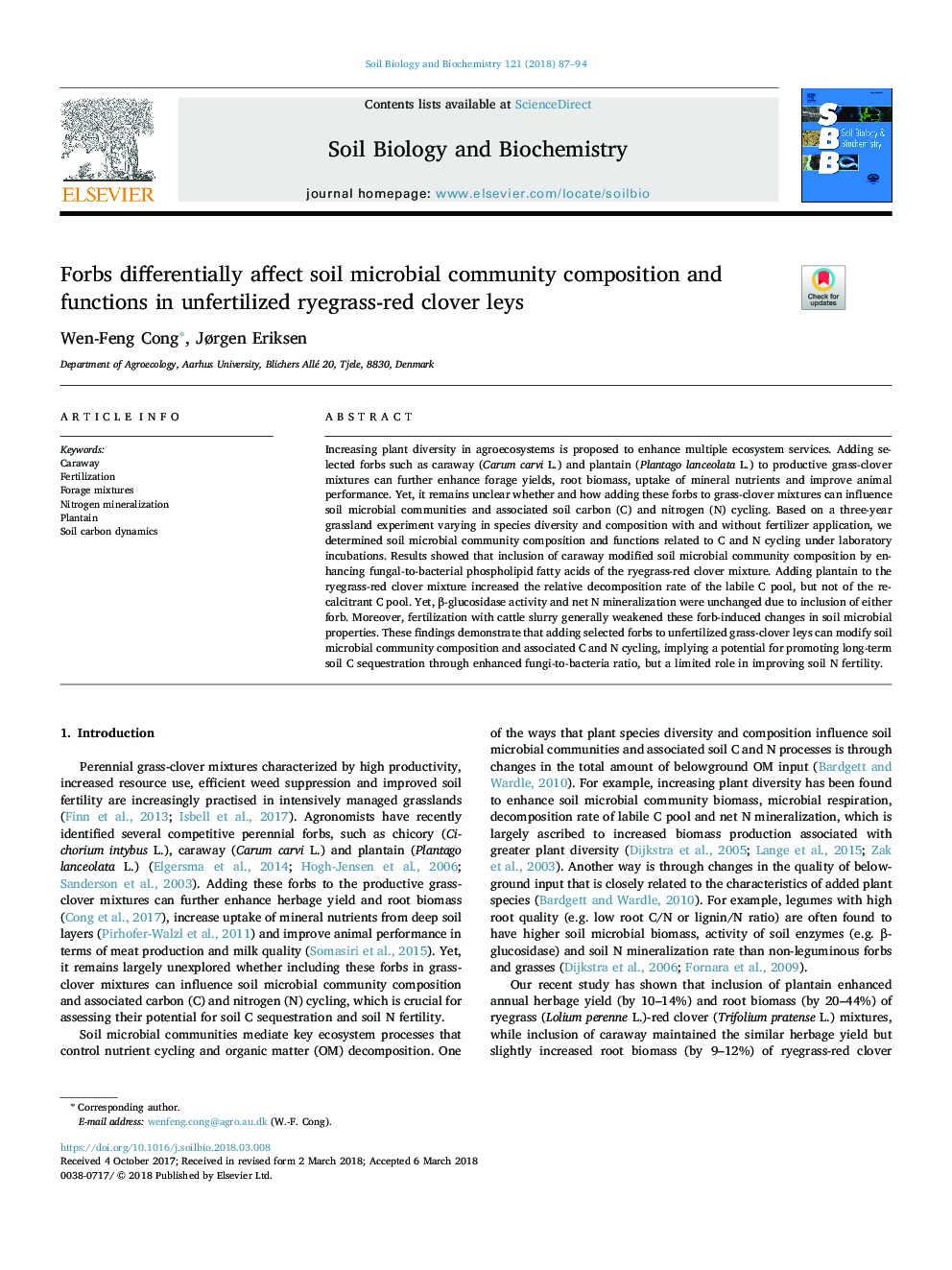| Article ID | Journal | Published Year | Pages | File Type |
|---|---|---|---|---|
| 8362767 | Soil Biology and Biochemistry | 2018 | 8 Pages |
Abstract
Increasing plant diversity in agroecosystems is proposed to enhance multiple ecosystem services. Adding selected forbs such as caraway (Carum carvi L.) and plantain (Plantago lanceolata L.) to productive grass-clover mixtures can further enhance forage yields, root biomass, uptake of mineral nutrients and improve animal performance. Yet, it remains unclear whether and how adding these forbs to grass-clover mixtures can influence soil microbial communities and associated soil carbon (C) and nitrogen (N) cycling. Based on a three-year grassland experiment varying in species diversity and composition with and without fertilizer application, we determined soil microbial community composition and functions related to C and N cycling under laboratory incubations. Results showed that inclusion of caraway modified soil microbial community composition by enhancing fungal-to-bacterial phospholipid fatty acids of the ryegrass-red clover mixture. Adding plantain to the ryegrass-red clover mixture increased the relative decomposition rate of the labile C pool, but not of the recalcitrant C pool. Yet, β-glucosidase activity and net N mineralization were unchanged due to inclusion of either forb. Moreover, fertilization with cattle slurry generally weakened these forb-induced changes in soil microbial properties. These findings demonstrate that adding selected forbs to unfertilized grass-clover leys can modify soil microbial community composition and associated C and N cycling, implying a potential for promoting long-term soil C sequestration through enhanced fungi-to-bacteria ratio, but a limited role in improving soil N fertility.
Related Topics
Life Sciences
Agricultural and Biological Sciences
Soil Science
Authors
Wen-Feng Cong, Jørgen Eriksen,
